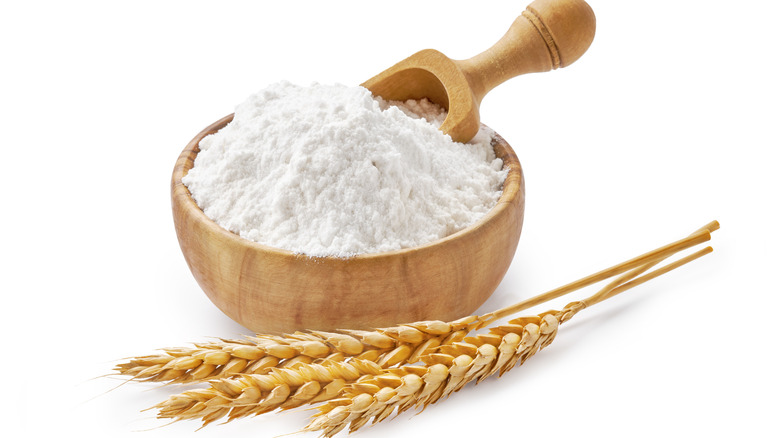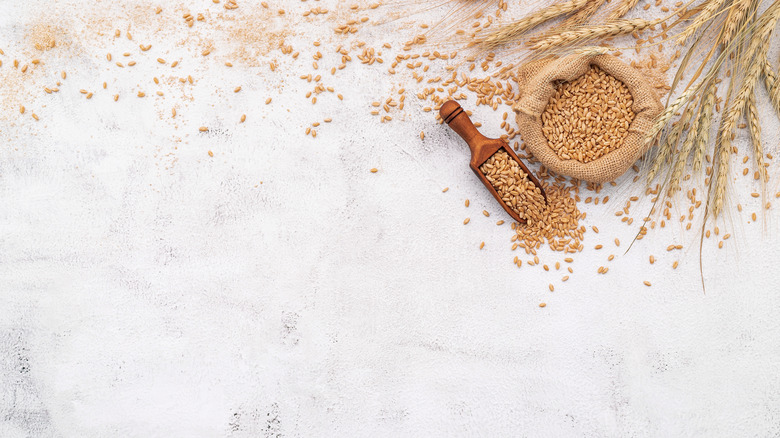What To Know Before Substituting White Flour With Freshly Milled Flour
There is quite a variety of flour on the store shelves and the one with the most choices is white flour. You can find white cake flour, bread flour, bleached or unbleached flour, and the ever-popular, all-purpose white flour. You likely easily grab it when you're shopping and use all-purpose white flour in a lot of recipes. Still, before you make anything with white flour, there are some things you should know.
According to Happily Unprocessed, all-purpose white flour is most often used for things like cookies, muffins, and biscuits. To make white flour, the process begins with whole wheat, which includes the bran, the germ, and the endosperm. To get flour down to that airy, fluffy, white stuff you recognize, the bran and the germ are removed and all that's left is the endosperm. The reason the bran and germ are removed is that the germ shortens the shelf life of flour, and the bran has a brown color. It's removed simply because consumers want their flour to be white, per Wikipedia. Unfortunately, with the removal of the bran comes the removal of important nutrients and fiber. So, what's the solution? Instead of buying white flour, you can choose freshly milled flour which still has the bran and germ as well as the endosperm. However, it may not always be the perfect substitute for white flour.
Replacing white flour with freshly milled flour
According to The Perfect Loaf, freshly milled flour is simply flour that has recently been milled. Milling is the process of turning grain berries into flour. The flour on store shelves is of course, not freshly milled. You might see the terms stone milled or roller milled when reading about milling flour. The stone method is more of an ancient method though still used today and is the best way to maintain all of the nutrients the grain berries contain. Roller milled produces the airy flour we are commonly used to. You can buy a small milling machine to use to mill your own flour at home, using wheat berries or any grain you prefer. Still, can you replace your white flour with freshly milled flour for any recipe?
Farm Fresh Wheat suggests you can easily replace white flour with freshly milled flour; however, sometimes the moisture content is different and small changes must be made. For example, freshly milled hard wheat can replace white flour at a 1-to-1 ratio, meaning no changes need to occur. Soft wheat that is freshly milled requires an extra ¼ cup for every 1 cup of white flour.
When baking with freshly milled flour, keep in mind that items may take a little longer to bake (via Milling Fresh). Your loaf of bread may need an extra ten minutes or so to be done. In the end, it's worth it for baked goods that have greater nutritional value.

